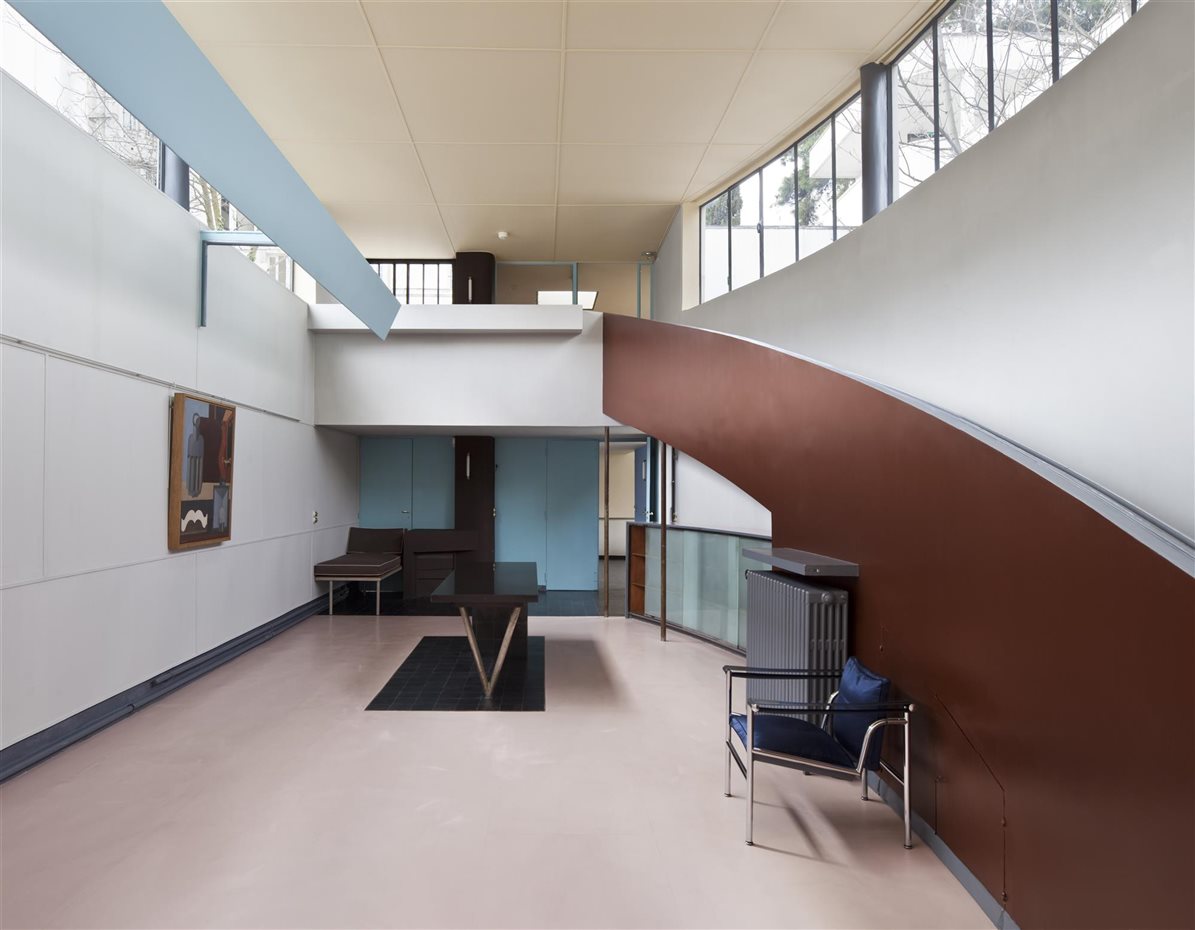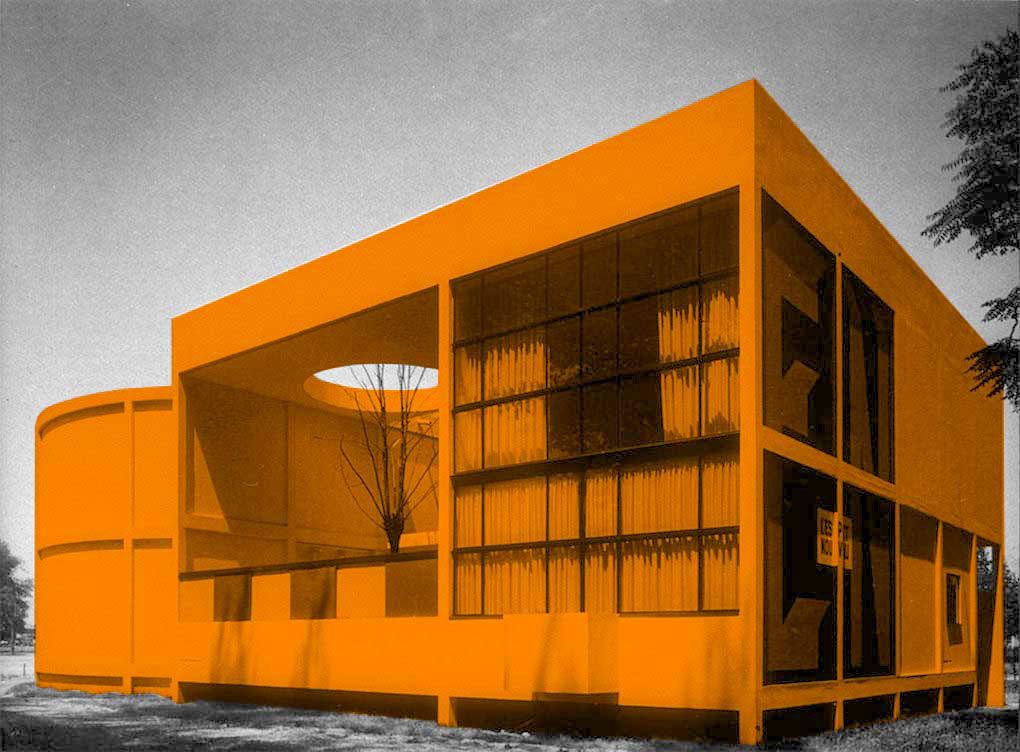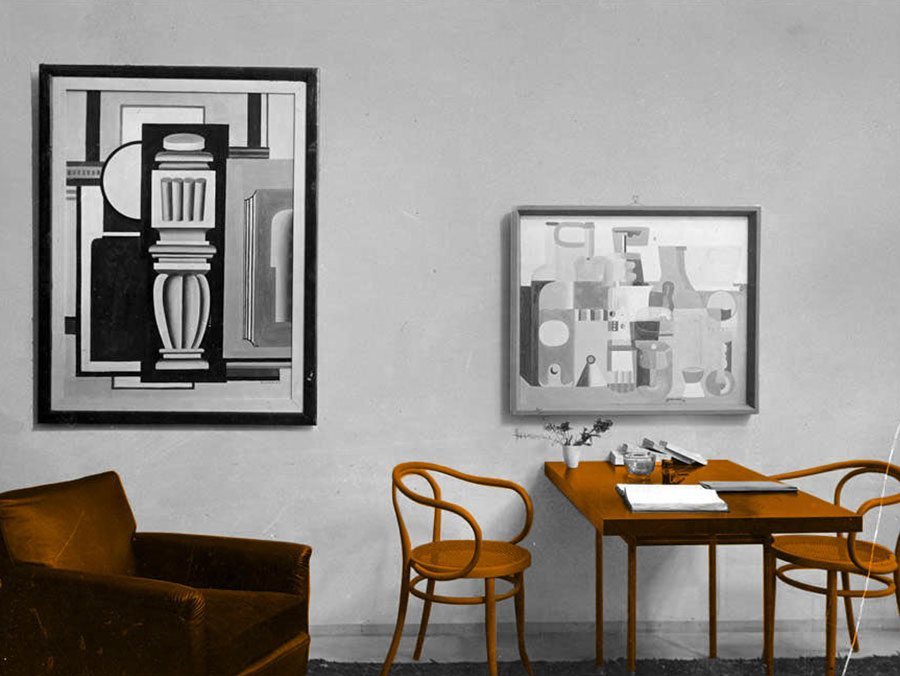
Le Corbusier Pavillon De "L'Esprit Nouveau" 1925 Mikko Vierumäki Flickr
Le Corbusier's ville contemporaine, as he envisaged it in 1925. In 1928, Le Corbusier was invited to enter a closed competition to find a design for the new headquarters of the Central Union of Consumer Cooperatives in Moscow. His winning proposal became the Tsentrosoyuz building in the north-east of the city, an "orgy of glass and concrete.

Le Corbusier’s “contemporary city” (1925) The CharnelHouse
Designed 1925-1925 as a residence for Swiss banker Raoul La Roche, Villa Roche is the quintessence of Le Corbusier's modern approach to housing.The. Projects Images Products & BIM.

Le Corbusier Villas La Roche 1925 , Paris Le corbusier, Villa, Architecture
In 1925, it was Le Corbusier whose pavilion outraged the sensibilities of the authorities, and set in motion a debate about modern architecture that has continued in Paris to this day. Le Corbusier had troubles with the exposition authorities from the start. After strenuous petitioning for exhibit space, he was finally granted one of the worst.

Villa Roche by Le Corbusier in 19231925, Paris, France Le corbusier, House styles, Architecture
Born: October 6, 1887 - La Chaux-de-Fonds, Switzerland Died: August 27, 1965 - Roquebrune-Cap-Martin, France Movements and Styles: Modern Architecture , The International Style , Purism , Brutalism Le Corbusier Summary Accomplishments "Space and light and order. Those are things that men need just as much as they need bread or a place to sleep."

Le Corbusier, Pierre Jeanneret, Pavillon de l’Esprit Nouveau, Paris, 1925. Parigi, Stile
The Plan Voisin was a planned redevelopment of Paris designed by French-Swiss architect Le Corbusier in 1925. The redevelopment was planned to replace a large area of central Paris, on the Right Bank of the River Seine.

Le Corbusier’s “contemporary city” (1925) The CharnelHouse
Coordinates: 48.865633°N 2.311486°E Pavillon de l'Esprit Nouveau was a model home constructed for the 1925 International Exhibition of Modern Decorative and Industrial Arts in Paris, France. The building was designed by Swiss architects Le Corbusier and Pierre Jeanneret. [1] Building

Esprit Nouveau Pavillon Paris 1925 Le Corbusier Le Corbusier, Cultural Events, Paris, Shed
Designed and exhibited at the Paris Exposition des Arts Décoratifs of 1925,. "Le Corbusier's Pavillon de l'Esprit Nouveau Named One of "20 Designs That Defined the Modern World"" 12 Nov 2017.

17 obras de Le Corbusier Patrimonio de la Humanidad por la Unesco
1924 Le Corbusier opened his studio at 35 rue de Sèvres, Paris, on September 18, in a former convent in the 6th arrondissement of Paris, which he had spotted in He remained there until his death. Construction of Cité Frugès, Maison Planeix and Pavillon de l'Esprit Nouveau 1925

Le Corbusier y “L’Esprit Nouveau” 1925 Ramon Esteve Estudio
III. Usurpation : Le folklore IV. Conséquences de crise V. Une bourrasque VI. Besoins-types. Meubles-types VII. L'art décoratif d'aujourd'hui VIII. La leçon de la machine IX. Le respect des musées d'art X. L'heure de l'architecture XI. Témoins XII. Esprit de vérité XIII. Le lait de chaux : La loi du ripolin. Confession

Pavillon de l'Esprit Nouveau (1925) by Le Corbusier r/ModernistArchitecture
The 'rue usine' and the 'alveolar' blocks in a view (Le Corbusier 1925) Fig. 2. Cross section and detail of a 'rue usine' (FLC 28788). The word 'street' is, in this case, quite imprecise. Le Corbusier describes the streets connecting the alveolar blocks as factories. The street "is a new type of organism, a sort of stretched-out

Gallery of Le Corbusier's Pavillon de l'Esprit Nouveau Named One of "20 Designs That Defined the
The public presentation of his radical Purist architectural design in form of Pavilion L'Esprit Nouveau, took place in 1925 at the Exposition International des Arts Décoratifs et Industriels in Paris. This model residence featured Purist art by Gris, Léger, Lipchitz, Ozenfant, and Le Corbusier himself.

Le Corbusier’s “contemporary city” (1925) The CharnelHouse
Le Corbusier (1887-1965) From Purism as Painting to Purism as Architecture To use the term "Art Deco" today is to introduce an anachronism, because to the extent that the style of this period had a name at all it was "Art Moderne," a name used in the 1920s and 1930s.

Le Corbusier L’Esprit Nouveau Pavilion Exposition des Arts Décoratifs Paris 1925
Le Corbusier 1 of 10 The Charnel House The Plan Voisin is a solution for the center of Paris, drawn between 1922 and 1925 by Le Corbusier. The plan for 1925 seems to be a direct transposition of the diagram of Contemporary City for three million drawn in 1922.

1925, Expo Paris, L'Esprit Nouveau, Le Corbusier Le Corbusier, Art Deco Architecture
Le Corbusier's Voisin Plan of 1925 was an instant sensation in Paris and beyond—was published in all the architectural magazines, sometimes in the press. The Plan Voisin changed the public perception of Le Corbusier. He was no longer only a painter or the designer of interesting houses, /he became a public figure.

Le Corbusier y “L’Esprit Nouveau” 1925 Ramon Esteve Estudio
Charles-Édouard Jeanneret, more popularly known as Le Corbusier, was a Swiss-French architect, designer, painter, urban planner and writer. In 1918 the controversial father of Modern architecture befriended the Cubist painter Amédée Ozenfant after moving to Paris. The artist encouraged the young architect to paint.

Le Corbusier, L'Esprit Nouveau Pavilion, Paris, 1925. Download Scientific Diagram
Le Corbusier was a Swiss-born French architect who belonged to the first generation of the so-called International school of architecture. Updated: Nov 17, 2021 Photo:.